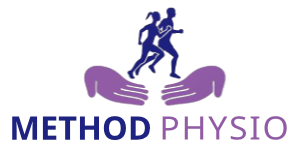Read Time: 2m and 35 secs
A tendon is a strong cord of flexible connective tissue in the body. Tendons connect muscles to bones. Tendons help us move our bodies and also function as shock absorbers in the body while we move. As is the case in most aspects of medicine, our understanding of tendon injuries has improved greatly in the last decade or so. While terms such as tendonitis were once used to describe a tendon in a state of disrepair, the term Tendinopathy is now used to describe these overuse injuries to tendons.

What is a Tendinopathy?
A tendinopathy occurs when a tendon fails to heal correctly. This failure to heal correctly can be characterised by a number of physical changes in the cellular makeup of the tendon (1). These physical changes cause weakening of the tendon leading to a mechanically less stable tendon that is probably more susceptible to damage (2).
What can cause a Tendinopathy?
Tendinopathic injuries have been associated with both chronic overload of tendons but similar characteristics have been seen when a tendon is unloaded (3). In order for a tendon to repair to the best of its abilities, it needs to be loaded adequately but not overloaded.

How will a Tendinopathy Present?
As these injuries are load related, they are usually associated with a rapid increase in activity. In the early stages of a tendinopathy, pain will typically be present at the beginning of an activity and then disappear as the body warms up to the exercise, only to reappear when cooling down or in the 24 hours after the activity.
Those experiencing a tendinopathy will usually be able to pinpoint the exact location of the pain, and usually describe the pain as “sharp” during the early stages and often as a “dull ache” as it has been present for some weeks.
Swelling, redness, muscle atrophy and asymmetry are also often present with tendinopathies.
What can we do to fix Tendinopathies?
In times gone by, corticosteroids were used to improve short term outcomes in specific types of tendinopathy. While these interventions are still used to treat some tendinopathies, they are now considered a short term fix and are unlikely to be used for the treatment of most tendon injuries.
The standard treatment for tendinopathy injuries is now to properly load the injured tendon with exercises. The loading of these tendons, if appropriate, works to improve tendon healing and remodelling through collagen cross-link formation. Typically, isometric and especially eccentric exercises are prescribed as these exercises require a greater force to be loaded through the tendon than during concentric exercises (4).
There is limited but increasing evidence and research into the use of other treatments for tendinopathies, such as shockwave therapy, laser therapy and ultrasound. However, these treatments are only used as an aid to treatment and are not likely to resolve a tendinopathy alone.
Most Importantly: How Long is it Gonna Take?
Short answer,as always, it depends.
Long answer is that tendinopathies exist on a spectrum, and each person is completely individual and will heal at their own pace. Having said that, tendinopathies tend to take longer than most sprains and strains to heal as more significant changes in the affected tissue need to occur for the tendon to function correctly (5).
On the low end of the scale, a treatment program involving progressive eccentric loading of the injured tendon may take 8-12 weeks before the issue is completely resolved. On the other end of things, the use of operative treatment for tendinopathies should be considered after 3-6 months of conservative management.
References:
1 – Maffulli et al. Novel Approaches for the Management of Tendinopathy. J Bone Joint Surg Am. 2010;92:2604-2613. doi:10.2106/JBJS.I.01744
2 – Arya S, Kulig K. Tendinopathy alters mechanical and material properties of the Achilles tendon. J Appl Physiol. 2010;108:670-5.
3 – Loppini M, Maffulli N. Conservative management of tendinopathy: an evidence-based approach. Muscles Ligaments Tendons J. 2012 Apr 1;1(4):134-7. PMID: 23738261; PMCID: PMC3666485.
4 – Rees JD, Lichtwark GA, Wolman RL, Wilson AM. The mechanism for efficacy of eccentric loading in Achilles tendon injury; an in vivo study in humans. Rheumatology (Oxford). 2008;47:1493-7.
5 – Wilson J, Best T. Common Overuse Tendon Problems: A Review and Recommendations for Treatment. Am Fam Physician. 2005;72(5):811-818.

